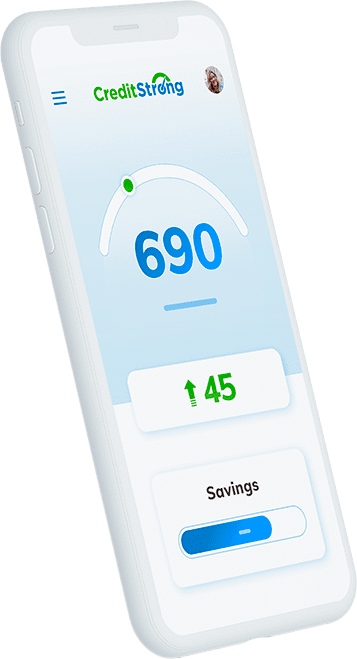Is 560 a Good Credit Score?

Build strong credit
while you save

To put this as kindly as possible, 560 is not a good credit score. Credit scoring spans from exceptional credit to very poor credit and a 560 credit score falls in the very poor category.
Most credit scores range from 300 to 850. With 850 being the best possible score and 300 as the lowest score. For some perspective, the average credit score, according to Experian’s credit score statistics, is 716.
If you have a 560 credit score, you’ve either just started building credit or you’ve had some missteps in your credit history. You’ll likely have to improve your credit score before you apply for any major forms of credit, but we’ll talk about that shortly.
Even though you’re starting at the bottom, there’s nowhere to go but up from here!
Is 560 a Good Credit Score for a Mortgage?
If you’re approaching a mortgage lender with a 560 credit score, you’re not likely to get approved for much without a co-signer. A mortgage is a huge responsibility and lenders don’t take it lightly.
As of 2021, Equifax reported just .01% of mortgages issued were approved for borrowers with credit scores ranging from 540 to 579. Those are very slim odds.
It doesn’t help that reports from Experian estimate that 62% of borrowers with credit scores below 579 are likely to be “seriously delinquent” in the future. Traditional mortgage lenders pay attention to those statistics. If you truly want to buy a home, work on your credit first.
If it can’t wait, there are other government options you might qualify for. The FHA offers home loans with a minimum credit score of 500. Much lower than the conventional loan minimum.
Be aware that getting an FHA loan with a low credit score means you’ll be putting up a higher down payment and paying more in interest over the life of the loan. The financial impact that has over a 30-year loan term is tremendous.
Higher monthly payments, higher interest rates, and higher down payments. That’s all money out of your pocket and it’s going towards what’s already your largest monthly expense – housing.
Loan programs like VA loans and USDA loans have no minimum credit score for qualified applicants. If you qualify, you’ll still have to be mindful of the down payment requirements and restrictions on the loan amount.
Is 560 a Good Credit Score for an Auto Loan?
Getting a car loan with a 560 credit score isn’t impossible. It’s going to take some research and it could be hard to find a lender who will work with your credit score. If you do get approved with bad credit, you’ll have to watch out for those interest rates again.
Auto loans can carry sky-high interest rates for borrowers with bad credit. That puts you in a bad position when you’re ready to sell your car or are trying to keep up with monthly payments.
Raising your credit score by just 20 points can save you money on an auto loan. If there’s no time to spare before getting a car, you can at least make the process easier on yourself by:
- Getting a co-signer. Preferably, someone you trust who has good credit. Be sure to make your payments on time so you don’t wreck your co-signer’s credit score.
- Searching for alternative lenders. Check with your local credit unions or online lenders for loan options.
- Using online pre-qualification tools. Find banks or other lenders online who can run a soft credit check before you apply.
- Checking for dealership financing. The finance manager might know of loan options for borrowers with bad credit scores.
If you’re staring down a 560 credit score wondering how you’re going to afford a car loan, it might be best to take some steps to improve your credit first. One of the easier things to get with a score like this is a secured credit card to start building credit.
Is 560 a Good Credit Score for a Credit Card?
A credit card is one of the first things you can get approved for when you’re first starting to build credit. If you have a 560 credit score, credit card issuers might not qualify you for a regular credit card yet. The best credit card options go to those with good credit.
Instead, you have the option of a secured credit card. With a secured card, you put down a security deposit which becomes your new credit limit. Now the card issuer takes on less risk and you have a chance to build your credit.
You make monthly payments for any credit card balances at the end of the billing cycle. That payment history gets logged with credit bureaus and recorded on your credit report. Wash, rinse, and repeat until your credit score is looking better.
When you make the transition to an unsecured credit card, you can close the secured credit card and get your security deposit back. The only downside is some secured credit cards come with an annual fee.
How to Improve a 560 Credit Score
Improving your credit score takes time and consistency. There are simple steps you can take to fix your credit and build a good credit history. It comes with the understanding that your credit rating is made up of several parts:
- Payment history (35%)
- Credit utilization (30%)
- Length of credit history (15%)
- New credit accounts (10%)
- Credit mix (10%)
Get a Credit Strong Credit Builder Loan
A credit builder loan is a solution that solves a few different issues on your credit report. If you only have credit cards, it improves your credit by introducing an installment loan to your credit mix.
Late payments? With consistent on-time payments to your credit builder loan, you’ll have good payment history reported to the three major credit bureaus. Having 12 months of regular timely payments gives a boost to your length of credit history too.
Unlike a personal loan, a credit builder loan is secured with funds locked into an interest-bearing savings account. With Credit Strong, your money is safe in an FDIC-insured account with the 5-star rated Austin Capital Bank.
If you’re ready to start seeing your credit rate go from poor credit to good credit, check out how Credit Strong can help. No credit check needed.
Maintain a Good Payment History
Payment history makes up 35% of your overall credit score. If late payments are one of the main reasons behind your current credit rating, it’s time to get a few things in order. Whether you’re making payments on a mortgage, personal loan, or credit card, they need to be on time.
Don’t get me wrong, some payment issues come from legitimate financial struggles where a job may have been lost, income is inconsistent, or a big emergency throws you off.
These are challenging situations, but once you gain your footing, you can start implementing strategies like these to put your payment history back on track.
- Set up auto-pay. It’s easy to forget due dates. Autopay pays your bills on time. Every time. Some companies even offer a small discount when you set it up.
- Make a budget and stick to it. It’s hard to set aside money for bills if you don’t know what else your money is going towards. Set up a living budget for all your necessities. Make sure to include hobbies and entertainment too.
- Set up online banking notifications. You can’t always check your accounts every day. Banking notifications allow you to stay up to date on any missed payments, paid bills, and received deposits. It makes it easier to stay on top of it all.
Once you get your payment history under control, you have to keep it going. That’s the most important part of building from a 560 credit score. Mastering behaviors, like making your payments on time, will push you to an 800 credit score if you’re consistent.

Decrease Your Credit Utilization
If you have credit cards already, do you max them out? That could be one of the reasons behind a poor credit score. Playing it too close to your credit limit can be detrimental to your credit score because lenders see it as irresponsible.
Borrowers with the highest credit scores keep their credit utilization low. Thus leaving a lot of available credit open and carrying very small balances. The Fair Isaac Corporation or FICO recommends keeping your credit utilization below 30%.
With this component contributing to 30% of your credit score, it’s important you use your credit responsibly.
Start Now to Improve Your Credit History
You shouldn’t put off fixing your credit. It can play a role in which jobs you get, where you’re able to live, and the kind of car you drive. The longer you wait to take action, the longer it will take to fix.
Start by making small changes to your finances. Put your bills on auto-pay and pay down credit card debt. Small changes add up over time and help you build a stronger credit report.
Your 560 credit score might seem like a lot to repair. It will take some effort, but you can make consistent changes to achieve your goals.
FAQs
Can I Get Approved With a 560 Credit Score?
That depends on what you want to get approved for. As we mentioned earlier, it’s unlikely for you to get approved for a conventional mortgage, unsecured credit card, or standard auto loan with that credit score.
If you know what options are available for low credit, you’ll have a better chance at approval. You can use sites like Credit Karma to see what your approval odds are for different credit products.
How Can I Raise My Credit Score Fast?
Improving your credit score is more about the long haul than quick improvements. You can raise your score in a few months by disputing inaccuracies on your credit report, getting a credit builder loan, or lowering your credit utilization below 30%.
It’s important to note that none of these solutions provide overnight results. Within a few months, you should start to see your credit score rise.
CreditStrong helps improve your credit and can positively impact the factors that determine 90% of your FICO score.
